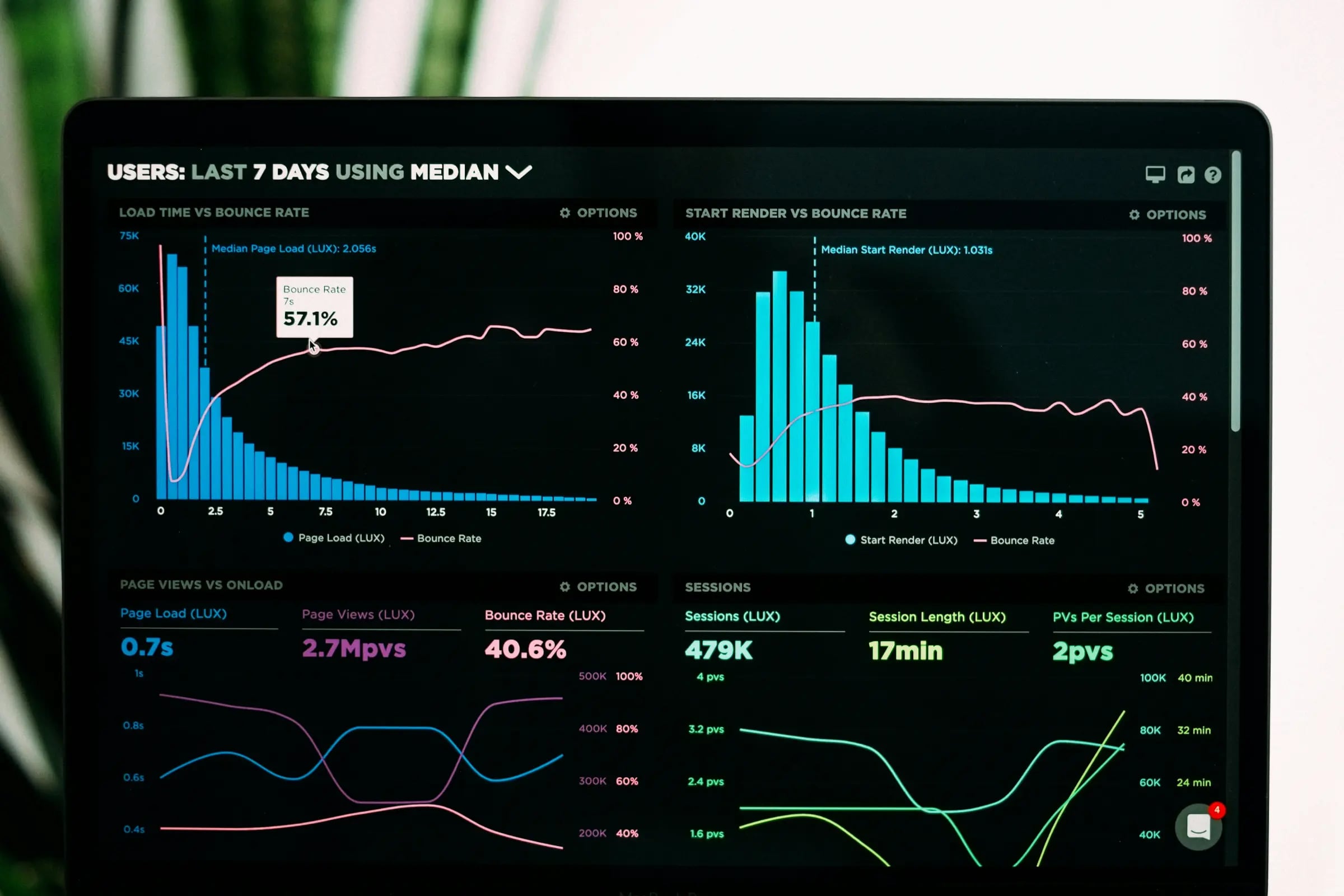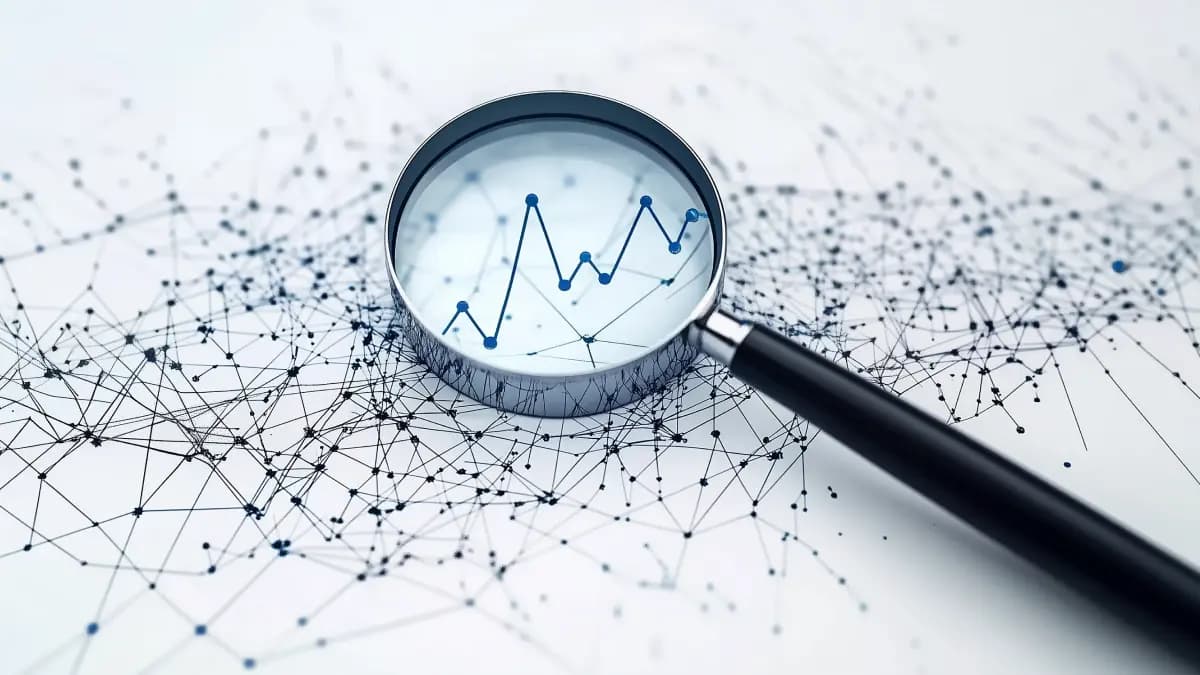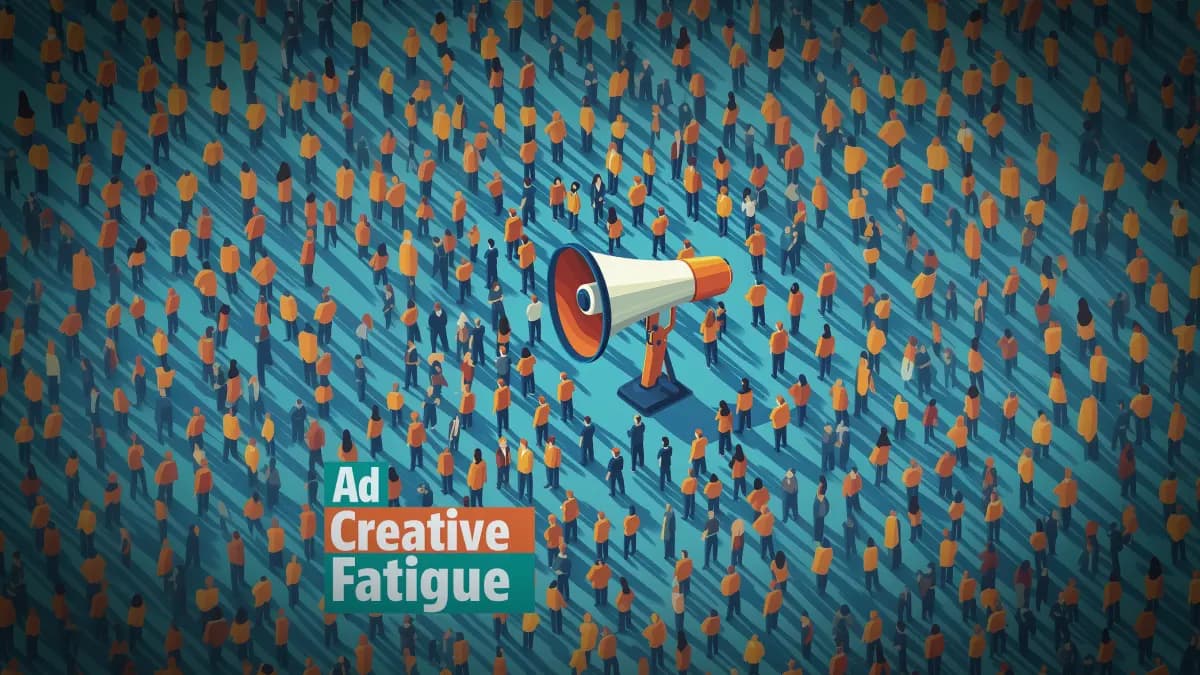Stay Updated
Get the latest insights on creative testing and ad optimization delivered to your inbox.
Get the latest insights on creative testing and ad optimization delivered to your inbox.

Learn how to transform raw advertising metrics into actionable creative insights through data storytelling and interpretation. Master the art of deriving meaningful narratives from campaign data.
In the complex world of digital advertising, numbers tell only half the story. At AdSights, we believe that the true power of data lies not just in measurement, but in interpretation. It's about deciphering the silent signals your audience sends through their interactions with your ads and translating these signals into actionable, creative insights. This process of data interpretation and creative iteration is what we call "Decoding the Data Story."
Humans are, at our core, sense-making creatures. We use stories not just to entertain, but to understand and navigate the complex world around us. Cognitive psychologist Jerome Bruner argued that narrative is a fundamental mode of thought—as central to human cognition as logical reasoning[1].
Stories are data with a soul.
Stories provide a framework for organizing information, making connections, and deriving meaning from our experiences and observations. In the realm of marketing and consumer behavior, stories play a vital role in how we interpret and apply data.
In our data-rich world, where we're constantly bombarded with information, stories serve as powerful tools for making sense of complex data patterns and trends. As data scientist Brené Brown notes, "stories are data with a soul"[2]. They transform raw facts and figures into a coherent, meaningful narrative that we can understand and act upon.
When we encounter an unexpected trend in our metrics, we instinctively begin to craft narratives to explain it. These stories aren't just post-hoc rationalizations—they serve as powerful tools for hypothesis generation and strategic planning. As Nobel laureate Daniel Kahneman explains in his work on decision-making, we often use narratives as mental shortcuts to make sense of complex situations and guide our actions.[3]
Moreover, stories help us bridge the gap between data and human experience. A collection of click-through rates or conversion metrics might seem abstract, but when framed as a story of customer motivation and behavior, it becomes relatable and actionable. This narrative approach to data not only helps us understand what's happening—it guides us in predicting what might happen next and how we can influence outcomes.
By embracing the narrative nature of human cognition in our approach to marketing analytics, we're not just analyzing numbers—we're uncovering the hidden stories that drive consumer behavior and brand success. In doing so, we transform data from mere information into a powerful tool for insight and action.

Marketers today are inundated with data—click-through rates, conversion rates, cost per acquisition, return on ad spend, and the list goes on. But what do these numbers really mean? More importantly, how can we use them to create better, more effective ad campaigns?
Consider this scenario:

Benchmark: 0.9%
Well above industry average
Benchmark: 1.4%
Below industry average
The data presents a puzzle: Why are so many people clicking, but so few buying?
This disconnect between CTR and conversion rate is not uncommon. A study by the Nielsen Norman Group found that high CTRs don't always correlate with desired user actions on landing pages[6]. This underscores the importance of looking beyond surface-level metrics to understand the full user journey.
This is where the art of data storytelling comes into play. It's not enough to simply report these numbers to your team or clients; to drive meaningful action, you need to craft a narrative that explains what's happening behind the metrics.
Data-driven narratives are not just stories we tell to make presentations more interesting—they are hypotheses about what is happening on the other side of the screen. These narratives serve several crucial functions:
Returning to our athletic wear example, instead of simply reporting the high CTR and low conversion rate, you might craft a narrative like:
Our vibrant imagery and compelling headline are clearly catching people's attention, driving the high click-through rate. However, the disconnect between clicks and purchases suggests that while we're generating interest, we're not effectively communicating value or urgency on the landing page.
This narrative not only explains the data—it suggests a path forward by offering testable hypotheses for creative iteration, such as adding more product details to the landing page or introducing limited-time offers.
This narrative leads to several potential creative iterations, each addressing a possible consumer objection:
Example Creative Solution: "Our UltraFlex running shoes aren't just comfortable—they're 30% lighter than the leading competitor, provide 25% more shock absorption, and come with a 60-day satisfaction guarantee. Why settle for less when you can run farther, faster, and more comfortably with UltraFlex?"
This ad directly addresses the competitive objection by highlighting unique selling points and adding a guarantee to alleviate lingering doubts.
These iterations align with the concept of "objection handling" - a technique commonly used in sales but equally applicable in advertising. By anticipating and addressing potential customer objections in our ads, we can smooth the path to purchase.
By testing these variations, you can refine your understanding of what drives consumer behavior and continually improve ad performance. Research by Blimpp indicates that addressing common objections in ad copy can increase click-through rates by 45%, conversion rates by 28%, and ROAS by 35%[7].

While all data has the potential to tell a story, anomalies often provide the most fertile soil for compelling narratives that lead to richer insights. These unexpected results challenge our assumptions and compel us to think more deeply about what is truly happening with our audience.
For instance, consider an ad with a middle-of-the-pack ROAS but an exceptionally low cost per "Add-to-Cart". This apparent contradiction begs for an explanation.
A possible narrative might be:
This ad resonates strongly with our audience, effectively persuading them to consider a purchase, as evidenced by the high Add-to-Cart rate. However, something is causing hesitation at the final stage of the buying process. Could concerns about cost or uncertainty about the product's fit or quality be at play?
While human insight is essential for crafting compelling narratives, the sheer volume and complexity of advertising data often exceed human analytical capabilities. This is where AI and machine learning come into play.
At AdSights, our AI doesn't just crunch numbers—it identifies patterns and anomalies that might elude human observation. For example:
These AI-generated insights serve as a catalyst for human creativity, prompting us to ask "why?" and craft narratives that explain these patterns:
A computer vision study found that AI-powered content analysis can predict video ad effectiveness with 89% accuracy with up to 84% accuracy by analyzing visual features and engagement patterns[8].

The true value of data-driven narratives lies in their ability to inform creative decisions. Each story you craft should lead to testable hypotheses and spark creative iteration.
Consider an example where an e-commerce company notices that one of their video ads has an exceptionally high view rate of 75% (industry avg: 50%)[9]but a below-average click-through rate of 0.5% (video ad avg: 1.84%)[10].
View Rate
Click-through Rate
Video Ad Average
Data sources: Wistia, 2023 State of Video Report and Innovid, Global Video Benchmarks Report
Our video captivates viewers and sustains their attention, yet it may lack a strong call to action. Viewers enjoy the content but fail to connect it with our product.
Adding a clear, compelling call-to-action overlay in the final seconds could boost click-through rates without affecting view rates.
The team produces a new video version featuring a prominent CTA overlay in the last 5 seconds, while preserving the core content and timing of the original.
Both versions were run simultaneously. After sufficient data was collected, the team evaluates the effectiveness of the new CTA to determine whether their hypothesis was correct and uses this insight to inform future creative decisions.
This cycle of observation, narrative creation, hypothesis generation, and testing is at the heart of data-driven creative optimization. It transforms marketing from a hit-or-miss endeavor into a systematic process of continuous improvement.
When Nest applied a similar process of data-driven creative iteration to their video ads, they achieved:
In the next section, we'll explore advanced techniques for crafting these data-driven narratives—including choosing the most relevant metrics for your story, balancing quantitative data with qualitative insights, and presenting narratives in a way that drives stakeholder action.

As we delve deeper into the art of data-driven storytelling, it's crucial to recognize that not all metrics are created equal. The key is to focus on the most relevant data points that truly illuminate your audience's behavior and preferences.
Instead of relying solely on top-line metrics like ROAS or conversion rates, insightful data stories most often emerge by examining a diverse set of metrics that capture different stages of the customer journey. The key is to select a combination of metrics that, when analyzed together, reveal the underlying narrative of your audience's behavior. Pairing metrics such as click-through rate, time-on-site, add-to-cart rate, and even post-purchase data like customer lifetime value provides a more complete narrative of your audience's interaction with your brand.
Recalling our athletic wear example: focusing solely on ROAS might have obscured why users showed initial interest yet ultimately did not convert. A holistic view helps craft a narrative that explains the entire customer journey and highlights areas for improvement.

Most people use statistics like a drunk man uses a lamppost; more for support than illumination.
Remember, it's not about tracking every metric, but selecting complementary data points that together tell a coherent story. As David Ogilvy, the father of advertising, once said, "Most people use statistics like a drunk man uses a lamppost; more for support than illumination." Our goal must be to employ metrics to illuminate the true narrative of our audience's behavior, not merely as support for our assumptions.
The effectiveness of your data story depends heavily on the metrics you choose to focus on. Not all metrics are created equal, and different metrics serve different purposes.
Companies using a diverse set of well-chosen metrics are 7% more likely to report revenue growth and 6% more likely to report market share growth than their peers[12].
Companies using diverse metrics
Companies using diverse metrics

Compelling data stories often emerge when analyzing relationships between different metrics. For example, a high CTR combined with a low conversion rate might indicate a disconnect between ad content and the landing page experience.
A real-world example comes from the e-commerce giant Amazon:
Amazon discovered that pages with longer load times had higher bounce rates and lower conversion rates. Their cross-metric analysis revealed a now famous finding that every 100ms of latency cost them 1% in sales[13]. This narrative not only explained the data but also justified significant investments in improving site speed.

Aggregate data can sometimes mask important insights. By segmenting data—by demographics, behavior, or other factors—you can uncover nuanced stories that lead to targeted improvements.
For example, a clothing retailer might find that while overall conversion rates are average, millennials convert at significantly higher rates. This insight could spark a narrative revolving around the brand's appeal to millennials, strategies to leverage this strength, and opportunities to improve performance in other segments.
Let's compare two approaches to the same challenge:
Analyzed conversion rates across age groups
Millennials converting at 3x the average rate
Created millennial-focused creative and messaging
Targeted landing page tests on other demographics leads to insights across all groups and custom optimized layouts
Applied insights to similar demographics, 85% ROAS increase
Reviewed overall conversion metrics
Tested generic improvements across all audiences
Variants improved conversion rates with some demographics and worsened with others
Despite continued testing, without arriving at this segmentation insight new experiments mostly result in a wash
No audience insights and only 2% ROAS improvement
The contrast is clear: while the traditional approach led to minimal improvements, segmentation revealed a crucial insight that drove significant results. This demonstrates how aggregate data can hide valuable opportunities that only become visible through careful segmentation.
While quantitative metrics form the backbone of our data stories, qualitative data can provide crucial context and depth. Customer feedback, social media comments, and support tickets can offer valuable insights into the "why" behind the numbers.
Netflix combines viewing data with qualitative insights from focus groups to inform content creation decisions. As an early pioneer of AI/ML techniques in content analysis, Netflix used these advanced methods to analyze vast amounts of viewer data. This approach led to the development of hit shows like "House of Cards," demonstrating the power of blending quantitative and qualitative data in storytelling[14].
Static snapshots of data can be misleading. By analyzing how metrics evolve over time, you can identify trends, cycles, and anomalies that enrich your narrative.
For example, an AdSights analysis for a sunscreen brand might reveal that while their ads perform well overall, there's a significant dip in engagement during winter months. This could lead to a narrative about the need for seasonal messaging shifts, perhaps focusing on travel or indoor UV exposure during colder months.

Crafting a compelling data narrative is only half the battle. The real challenge lies in presenting this story in a way that drives action and buy-in from stakeholders. Here are some strategies to make your data stories more impactful:
Begin with a high-level summary that captures the essence of your data story—be it a powerful metric or a concise statement that encapsulates your main finding.
"Our new video ad campaign increased brand recall by 40%, yet this didn't translate into sales. Today, we'll explore why and how to bridge this gap."
Data visualization is a powerful tool for making complex information more digestible. However, it's crucial to choose the right type of visualization for your data.
Vision is our most dominant sense, taking up half of our brain's resources. When we see information presented visually, we are far more likely to remember it. According to Dr. John Medina's research in "Brain Rules", people remember only 10% of information they hear three days later, but recall 65% when the information is paired with relevant images[15].
It is important to note that the brain has limits on how much it can process at once. Therefore, simpler visualizations can often be more effective than complex ones.
Frame your data in a narrative structure with a clear beginning, middle, and end. Start by setting the context-what was the situation?-then present the complication-what unexpected thing did we discover?-and finish with the resolution-what do these insights mean and what should we do about it?
Set the stage by explaining the initial situation and background. What was the initial starting point? What were the key metrics and goals?
Present the unexpected insights or challenges that emerged from your data analysis. What patterns or anomalies did you discover?
Explain what these insights mean and outline clear, actionable recommendations. What specific steps should be taken based on the data?
Tailor your story to your audience's interests and priorities. For a CEO, focus on high-level metrics and bottom-line impact. For a creative team, emphasize insights that inform design and messaging decisions:
Conclude your presentation with specific, data-backed recommendations. Don't just outline the problem—propose solutions.
Based on our analysis, we recommend:
We recommend allocating 20% of the budget to test these variants over the next month.

Looking ahead, several trends are shaping the evolution of data-driven storytelling in marketing:
With advances in AI and machine learning, we are moving toward hyper-personalized data stories. Instead of a one-size-fits-all narrative, brands will craft individualized stories based on each customer's unique interaction history.
As predictive analytics grow more sophisticated, we'll see a shift from descriptive to prescriptive narratives. These stories will not only explain what happened—they will forecast what might happen next and recommend optimal courses of action.
In the intricate world of digital marketing, data-driven storytelling is more than just a buzzword—it's a vital skill that can differentiate a resonant campaign from one that falls flat.
By decoding the stories hidden in our data, we gain profound insights into consumer behavior, enabling us to craft more effective marketing strategies and drive superior business results. More importantly, we forge meaningful connections with our audiences by truly understanding and responding to their needs.
As the legendary management consultant Peter Drucker once said, "The most important thing in communication is hearing what isn't said." In the world of digital marketing, data is that unspoken voice of the customer. Learning to listen to it – and translate it into compelling narratives – is the key to marketing success in the digital age.

The most important thing in communication is hearing what isn't said.
In the world of digital marketing, data is that unspoken voice of the customer. Learning to listen to it – and translate it into compelling narratives – is the key to marketing success in the digital age.
Remember, the goal of data storytelling is not just to report what happened, but to explain why it matters and what we should do about it. By following the principles outlined in this guide, you'll be well on your way to becoming a master data storyteller, capable of transforming raw metrics into actionable insights that drive creative excellence.
At AdSights, we're committed to empowering marketers by equipping them with the tools and insights necessary to become master storytellers in this data-rich era. Because we believe that when data meets creativity, that's when marketing magic truly happens.
Continue reading about this topic with these recommended articles.

Discover how to separate meaningful marketing insights from statistical noise with data science techniques. Learn proven methodologies to identify genuine patterns, avoid costly misinterpretations, and make truly data-driven marketing decisions that impact your bottom line.
AI-powered marketing tools

Master the art of identifying and managing creative fatigue in Meta advertising campaigns. Learn data-driven techniques, advanced analytics approaches, and proven strategies to maintain peak ad performance.
AI-powered marketing tools

We built these tools for ourselves because we were tired of firing up Figma for every simple mockup. Figured other marketers might find them useful too.
AI-powered marketing tools